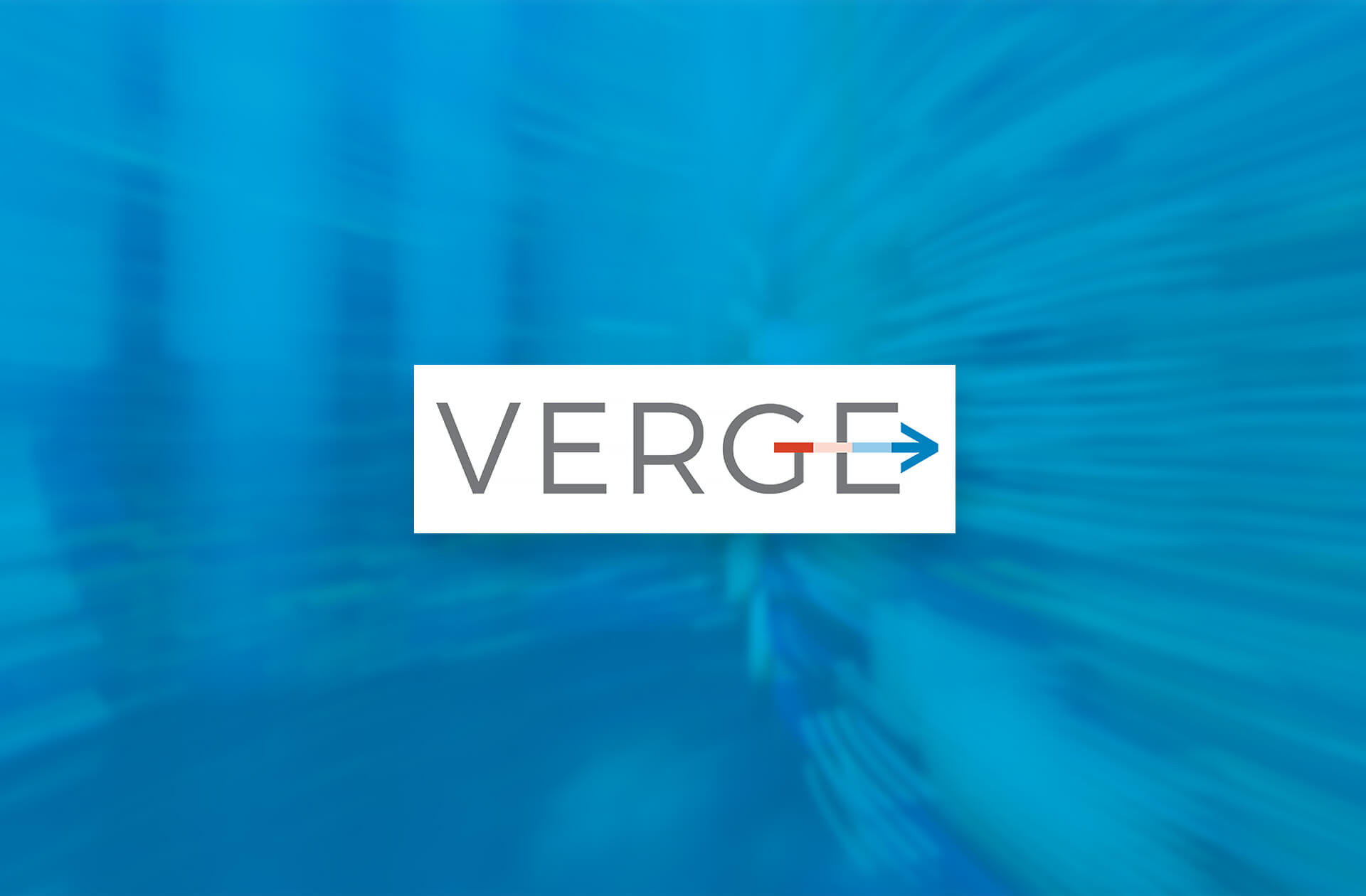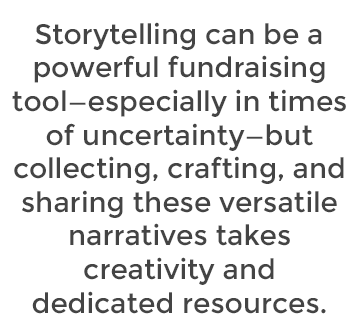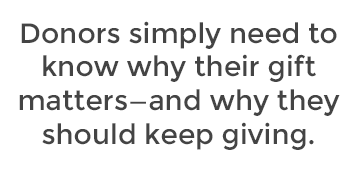

According to Giving USA, charitable giving reached a new milestone in 2017, surpassing $400 billion for the first time—but what are nonprofit leaders seeing in their day-to-day work? Each year, we discuss the Giving USA research to understand how the macro trends are playing out in communities across the country.
In 2018, Campbell & Company reached nearly 1,000 nonprofit and fundraising professionals with five in-person events and two webinars. To keep the conversation going, we compiled the top themes our speakers touched on during our Chicago event, VERGE forum, and National and Northwest webinars:
Fundraisers must adapt to the donor-advised fund (DAF). This popular giving vehicle is only gaining steam. A number of our speakers shared anecdotes that corroborate this trend: the Cleveland Foundation saw a large spike in DAF giving in the fourth quarter of 2017, Earthjustice experienced a bump in donor-advised gifts, and the number of DAFs at Pride Foundation has grown in recent years.
Fundraisers should always treat donors who give through DAFs as individual donors, even though the gifts are administered through a sponsoring organization. Maintaining strong relationships with DAF holders requires the same ongoing stewardship as someone who makes a direct gift.
When an organization receives a non-anonymous DAF gift, development staff should make sure the donor feels appreciated and understands how their contribution moved the needle. If direct communication isn’t possible, fundraisers can reach out to the sponsoring organization with correspondence to share with the donor.
Development leaders can take other proactive steps, as well: “Stay in close contact with your local sponsoring organization to ensure that the program officers and advisers are aware of what you’re doing and the impact you’re having with the resources that you’re requesting,” advised Fidelma McGinns, Vice President, Philanthropic Services of Seattle Foundation.

Across all donors, institutions can leverage their existing technology to grow their development program and strengthen broad-based giving. “Most nonprofit organizations have already invested in database systems,” noted Peter Fissinger, President and CEO of Campbell & Company. “These systems allow them to identify new donors, thank them accordingly, and send personalized requests to existing donors—and yet many institutions have not taken the time to do these things effectively.”
By better leveraging the technology at their fingertips, organizations can improve their fundraising results.
Storytelling is a powerful way to connect with donors. People are constantly bombarded with messaging from organizations vying for attention and dollars. The power of storytelling to break through this clutter was a common thread through many of our events.
Some nonprofits are tapping into the urgency donors feel in response to political issues to craft poignant stories. Others are using them as a retention strategy, telling stories to illustrate the outcome of their work. Still others are leveraging storytelling to deliver complex information in an easily digestible way.
Storytelling can be a powerful fundraising tool—especially in times of uncertainty—but collecting, crafting, and sharing these versatile narratives takes creativity and dedicated resources.
Transformative change requires investments in infrastructure. From storytelling to technology to staff, our speakers highlighted many areas traditionally termed “overhead” that demand significant investment—if an organization plans to make a lasting impact.
At Earthjustice, leaders have taken a close look at staffing levels. Mollie Marsh-Heine, the organization’s Vice President of Development, explained that they recognize the importance of investing in the department’s infrastructure. Appropriate staffing is critical to achieving their goals five to 10 years out.

At our VERGE forum, Founder and Executive Chairman Billy Shore of Share Our Strength brought this concept full circle, explaining how it relates to responsible use of charitable contributions: “Using donor money well and not circling through staff because they can’t afford to stay or aren’t being trained well: all these forces come together to make the case for making these investments.”
Tracking and communicating impact has never been more important. The Giving USA research painted a positive picture of the 2017 philanthropic landscape: a strong economy contributed to robust contributions across all giving sources. While there are many reasons to be optimistic, nonprofit leaders can’t control how external forces, from economic considerations to tax reform, will affect giving in the future.
At a time of relative uncertainty, it’s critical to focus on what is within nonprofits’ power. While investments in infrastructure are important, measuring return on that investment is equally important. Donors need to know how their support is making a difference, and they’re more likely to continue that support if they understand the impact of their dollars.
Our speakers recognized that measuring outcomes may require significant resources, but they agreed that tracking impact is nonnegotiable for all nonprofits. Smaller shops should consider collaborating with other organizations to track data. This collective impact approach may be especially attractive to institutional grantmakers—corporations and foundations.
Editor Stacy Palmer of The Chronicle of Philanthropy explained that showing impact doesn’t have to be costly or complicated. Donors simply need to know why their gift matters—and why they should keep giving.
Thank you to our speakers at all seven Giving USA events and to everyone who attended. Giving USA is only a starting point for a yearlong conversation, so please share your comments below or contact us directly to discuss the research and its implications.